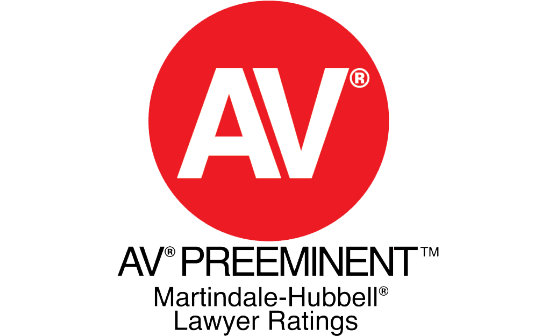The spinal cord is a network of nerves that sends and receives information coordinating movement, sensation and controlling many automatic reflexes and body functions like breathing and digestion. Essentially, the spinal cord is part of the body’s communication network. The spinal cord begins at the brain and runs down to the lumbar region through a hollow portion of the vertebrae. The vertebrae act like a protective shell for the fragile and delicate spinal cord.
Unfortunately, while the vertebrae provide protection, they are not invulnerable and, when sufficient force is applied, damage to the spinal column can be sustained. Trauma or injury to the spinal cord can prevent signals from being transferred throughout the body. If a catastrophic injury occurs to either the vertebrae or to the spine, serious and often permanent disability including paralysis can result.
Essentially, spinal cord injuries can significantly and irrevocably alter a person’s life. Aside from impacting the physical, mental, emotional, and financial aspects of the injured person’s life family members, friends, and other loved ones are impacted. Individuals with spinal cord injuries, along with their families, may mourn the loss of a life that could have been while simultaneously coping with the limitations a serious injury can create.
What Are the Mechanics Behind a Spinal Cord Injury?
The spine is divided into different segments that correspond to different areas of the body:
- The cervical spine is located in the neck and is responsible for controlling nerves in the neck, arms, hands, and diaphragm.
- Below the cervical spine is the thoracic region, which controls the abdominal and chest muscles.
- The lumbar region controls leg, foot, and toe movements and functions, and finally, the sacral region controls bowel, bladder, and sexual functions.
The spinal cord can be injured in several different ways. Both the type of spinal injury and the severity of the injury determines how much function or sensation is lost, and dictates whether or not a person is likely to recover. For instance, bruising or stretching of the spine can cause lesions on the spinal cord but nevertheless may allow an individual to have some function and movement. By contrast, laceration and the complete severing or separation of the spinal cord will usually result in permanent paralysis.

As previously alluded to, injuries to different segments of the spinal cord will result in impairment in different areas of the body. For example, injury to the cervical spine may result in loss of function and sensation below the site of the injury. Likewise, if the injury occurs in the thoracic region, body parts below the injury site may be impaired, but hands, arms, and lungs can be unaffected. Typically, the higher up on the spine or spinal column the injury is located, the more devastating the disability will be.
What Types of Problems Can Cervical Spine Injuries Cause?
Cervical spine injuries are the most common spinal cord injuries and often result in paralysis of the arms, legs, and torso, and quadriplegia. Depending on the severity and location of the injury, respiratory functions may be impaired, and individuals may require the aid of a ventilator to help them breathe. Cervical spine injuries are most often caused by motor vehicle accidents such as vehicle or van rollovers, falls from heights, falls from balconies, falls from ladders, sports injuries, and violence or assault. Spinal cord injuries can also be the result of a work injury, airplane crash, diving or swimming pool accident, and result in injuries to the thoracic cervical region and cause paraplegia. Paraplegia is paralysis or loss of function and sensation in the legs and lower torso. Misplaced screws or hardware used in surgery, certain diseases, swelling, irritation, or punctures by fractured vertebra may also cause spinal cord injuries that result in paraplegia.
Spinal cord injuries may result in not only quadriplegia and paraplegia, but also motor function deficits, sensory deficits, numbness, tingling, pain, inability to regulate blood pressure, loss of sexual function, loss of bowel and bladder function, mobility problems, breathing problems, digestion problems, and depression. People suffering from spinal cord injuries usually require long hospital stays and long-term medical care. Treatment for spinal cord injuries includes physical therapy and rehabilitation, occupational therapy, surgery, medication, and psychological care. Wheelchairs and other mobility aids may be necessary. The individual’s home may need to be equipped with handicap-accessible features like ramps and chairlifts. Individuals who may have lived completely independently may require help with the most basic day-to-day activities like eating, getting dressed, and bathing after sustaining a spinal cord injury.
If You or a Loved One Suffered a Spinal Injury in Pennsylvania, Our Lawyers Can Help
For more than 40 years, the experienced spinal cord injury and brain injury attorneys of The Reiff Law Firm have worked to fight for injury victims. The Reiff Law Firm lawyers understand the physical, emotional, and financial toll spinal cord injuries can take on not only the injured individual but also on their families and loved ones. If you or a loved one’s catastrophic spinal cord injury was caused by someone else’s negligence, carelessness, or irresponsibility we may be able to help. Likewise, if a spinal cord injury was the result of defectively designed or manufactured product, our experienced spinal cord injury lawyers may be able to fight hard to get you the compensation you need to help you with medical bills, rehabilitation costs, loss of income, emotional damage, and pain and suffering.
Our experienced medical and legal teams understand the hardship you are facing and have a proven track record of successfully representing victims that have unnecessarily suffered life-altering spinal cord injuries. Our highly specialized Philadelphia spinal cord injury lawyers have fought and won significant awards for people who were victims of spinal cord injuries or wrongful death due to product defects, terrorism, motor vehicle accidents, rollover accidents, construction accidents, malpractice, sports injuries, playground injuries, swimming pool and diving accidents, amusement park accidents, truck accidents, trailer malfunctions, as well as hundreds of other catastrophic events that led to devastating spinal cord injuries, paralysis, or death. While all matters are different and are decided on the facts and circumstances present, our experience handling these matters will reduce the likelihood of oversights or errors and can potentially increase your likelihood of recovery.
To schedule a free and confidential initial consultation, please call us at (215) 709-6940 today.















